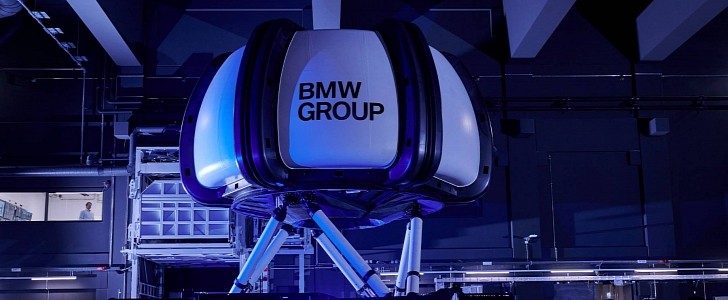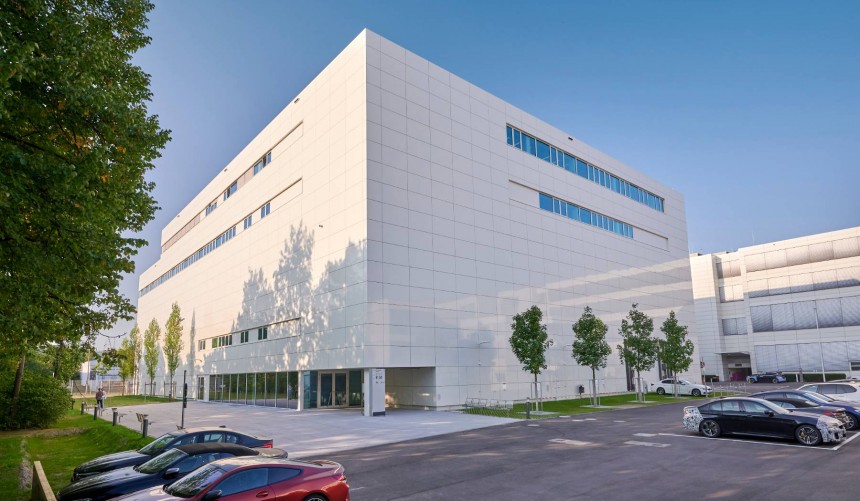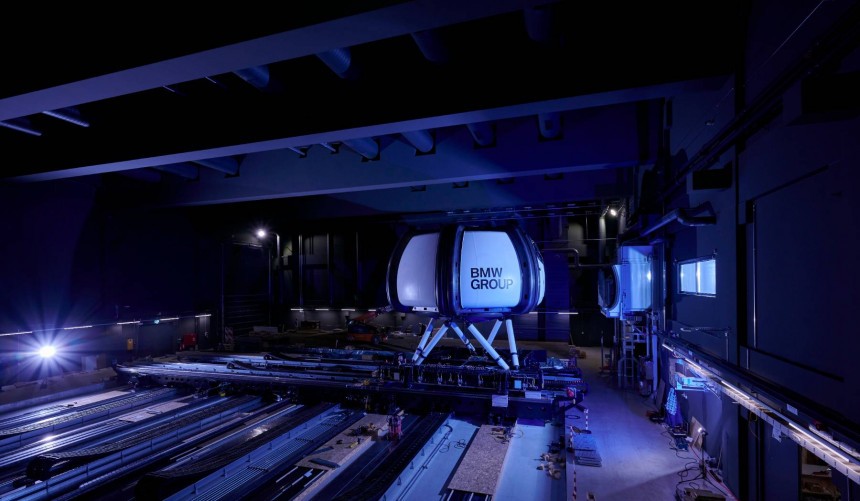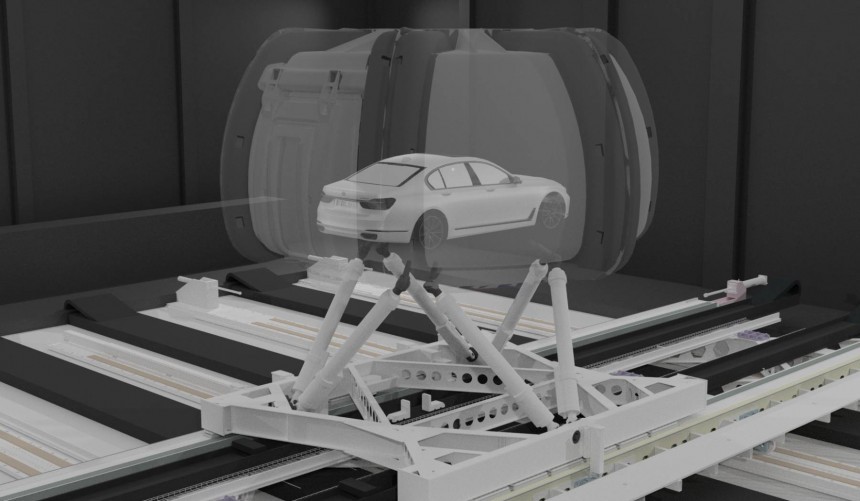For the past two years, BMW has been building one of the biggest and most advanced simulation centers in the automotive industry. The mind-blowing construction features fourteen individual simulators and usability labs that can be employed in every stage of the development process.
The center covers an area of 11,400 square meters (about the area of a Manhattan city block) and includes facilities that range from static to high-fidelity simulators able to replicate every conceivable situation with a simple press of a button. This provides engineers with the perfect tools for every phase of development, all in the same facility.
From infotainment innovations, chassis fine-tuning, or interior features to fully autonomous driving scenarios, every tiny aspect of development can be examined in the new center.
Unlike Tesla, which uses its customers to test features in real-life situations, BMW uses qualified external testers to deliver highly refined, customer-oriented features and integrate their valuable feedback in the development process.
The astonishing complexity of the center allows parts like tires, suspension systems, or entire axles to be instantaneously swapped on the virtual prototypes, which limits the number of actual, real-life test vehicles that have to be built while also exponentially reducing the time it takes to develop these parts.
The way drivers and passengers interact with new features and their effectiveness can be intensively analyzed so that the final products are precise and intuitive. Also, routes and weather conditions from all around the world can be easily replicated with an incredible level of accuracy.
“Both in the early phase of development and at the validation stage, every nuance that goes into making the driving feeling for which BMW is renowned can be sampled in the state-of-the-art simulators,” says Thomas Lachner, a driving simulation expert with the driving dynamics development team.
The highlights of the new Driving Simulation Centre are the high-fidelity and high-dynamic simulators, where engineers perform tests that could only be done in real prototypes on actual roads a few years ago.
The focus of the high-fidelity simulator is replicating challenging driving situations, such as those encountered in urban driving. Simultaneous longitudinal, transverse, and rotational movements can be replicated in the 400 square meters motion area, as well as acceleration forces of up to 0.65 G, similar to those in the M3.
The high-dynamic simulator tests user functions in dynamic driving situations, being able to replicate longitudinal and lateral acceleration forces of up to 1 G, which is close to what a professional driver experiences in a BMW iFE.20 Formula E racer. The unit is over nine meters tall and the moving mass weighs around 23 metric tons.
The movements of both high-tech simulators use a sophisticated system of wheels and rails that reacts to driver inputs without a moment’s delay, reproducing all the small details of the driving pleasure that BMW vehicles are renowned for.
This is made possible using linear electric motors with no moving parts. They hover above a series of magnets with poles alternating in quick succession like the technology used by high-speed maglev trains.
Tests are performed in a dome-shaped unit placed on an electromechanical hexapod system that can move in any direction. Inside, a vehicle mock-up is installed on a turntable that recreates rotary movements.
An immersive 360-degree projection of the surrounding area is cast inside the dome to recreate every single detail of the environment. All these features blend masterfully to give testers the most realistic reproduction of a dynamic, real-world driving experience.
For years, driving simulators have played a major role in the development of modern vehicles, and the Bavarian manufacturer recognizes the major advantages of these technologies investing in the cutting-edge equipment to enhance the quality, safety, and performance features of its future vehicles.
Construction of one of the most advanced driving simulation center the world has ever seen began in mid-August 2018, at the Research and Innovation Center (FIZ) site north of Munich.
Despite the ongoing health crisis and the associated restrictions, it was completed in May this year, and since then, installation of the simulators and equipment has been progressing at lightning speed, with the center set to be fully functional in the coming months.
From infotainment innovations, chassis fine-tuning, or interior features to fully autonomous driving scenarios, every tiny aspect of development can be examined in the new center.
Unlike Tesla, which uses its customers to test features in real-life situations, BMW uses qualified external testers to deliver highly refined, customer-oriented features and integrate their valuable feedback in the development process.
The way drivers and passengers interact with new features and their effectiveness can be intensively analyzed so that the final products are precise and intuitive. Also, routes and weather conditions from all around the world can be easily replicated with an incredible level of accuracy.
“Both in the early phase of development and at the validation stage, every nuance that goes into making the driving feeling for which BMW is renowned can be sampled in the state-of-the-art simulators,” says Thomas Lachner, a driving simulation expert with the driving dynamics development team.
The highlights of the new Driving Simulation Centre are the high-fidelity and high-dynamic simulators, where engineers perform tests that could only be done in real prototypes on actual roads a few years ago.
The focus of the high-fidelity simulator is replicating challenging driving situations, such as those encountered in urban driving. Simultaneous longitudinal, transverse, and rotational movements can be replicated in the 400 square meters motion area, as well as acceleration forces of up to 0.65 G, similar to those in the M3.
The high-dynamic simulator tests user functions in dynamic driving situations, being able to replicate longitudinal and lateral acceleration forces of up to 1 G, which is close to what a professional driver experiences in a BMW iFE.20 Formula E racer. The unit is over nine meters tall and the moving mass weighs around 23 metric tons.
This is made possible using linear electric motors with no moving parts. They hover above a series of magnets with poles alternating in quick succession like the technology used by high-speed maglev trains.
Tests are performed in a dome-shaped unit placed on an electromechanical hexapod system that can move in any direction. Inside, a vehicle mock-up is installed on a turntable that recreates rotary movements.
For years, driving simulators have played a major role in the development of modern vehicles, and the Bavarian manufacturer recognizes the major advantages of these technologies investing in the cutting-edge equipment to enhance the quality, safety, and performance features of its future vehicles.
Construction of one of the most advanced driving simulation center the world has ever seen began in mid-August 2018, at the Research and Innovation Center (FIZ) site north of Munich.
Despite the ongoing health crisis and the associated restrictions, it was completed in May this year, and since then, installation of the simulators and equipment has been progressing at lightning speed, with the center set to be fully functional in the coming months.












